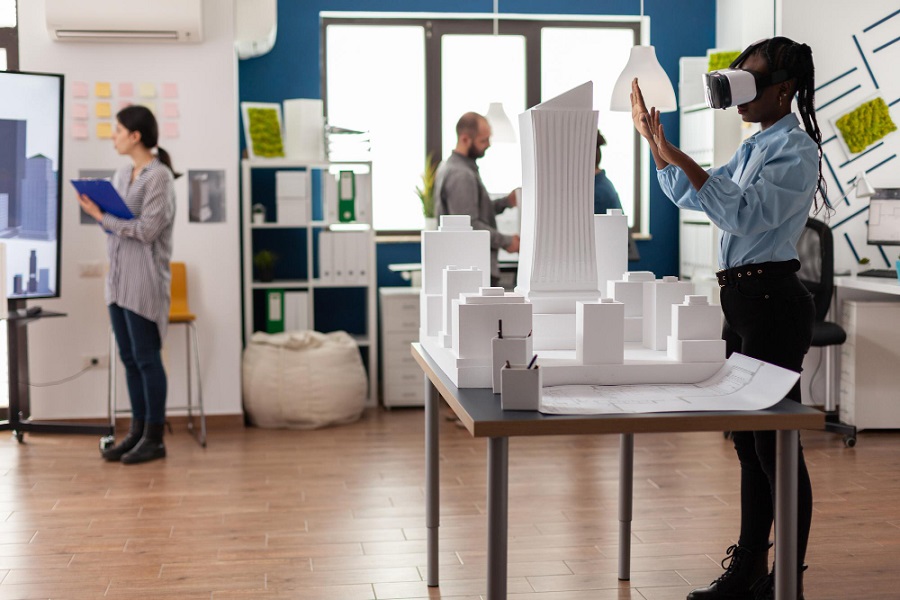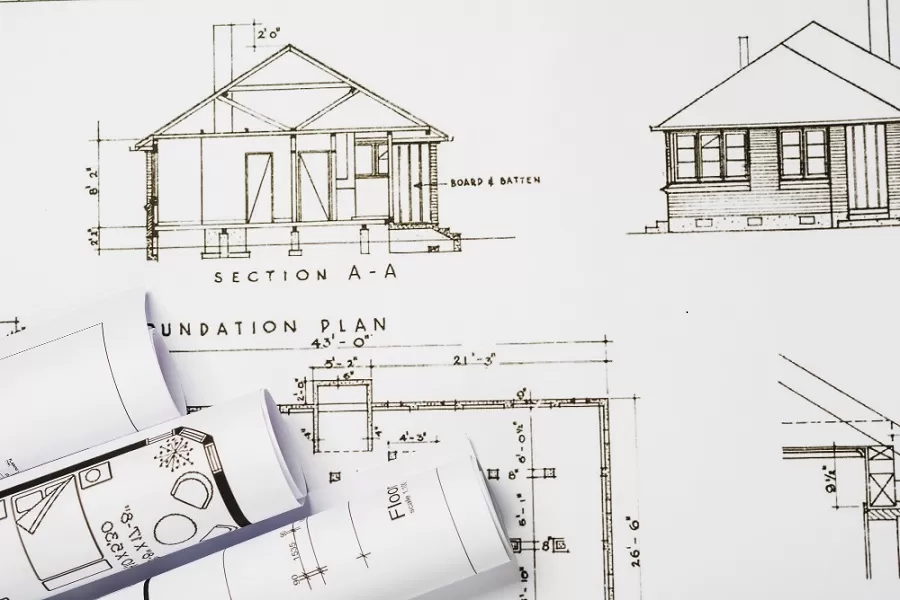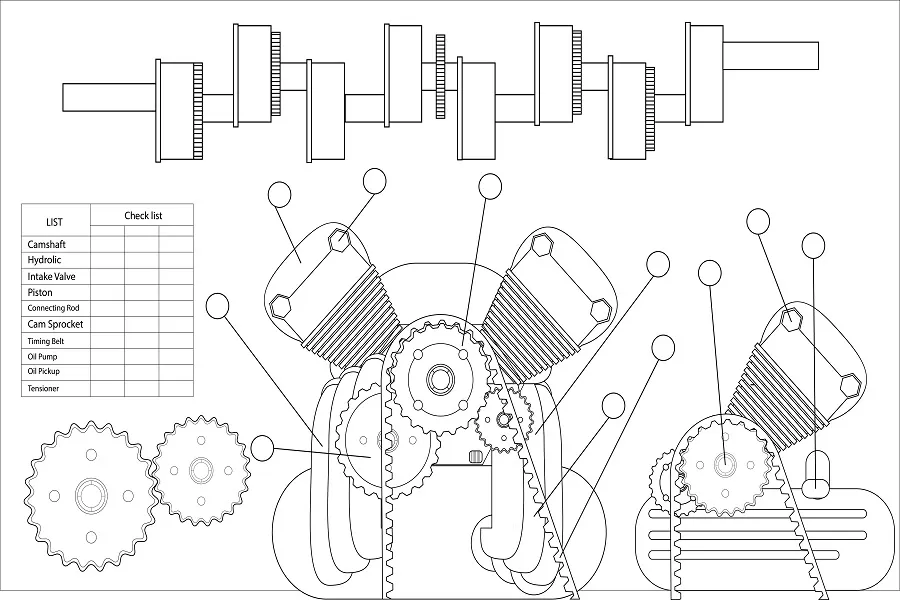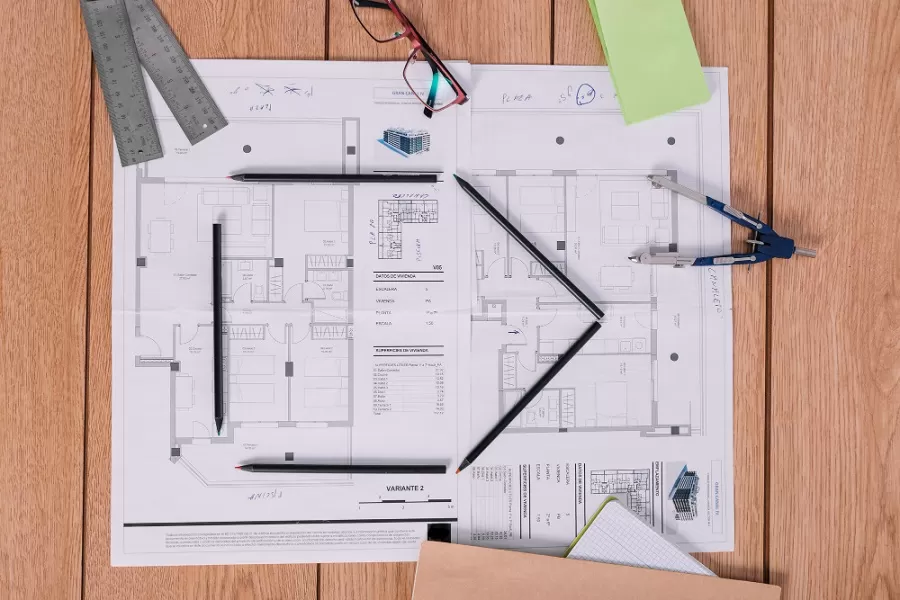Scan to Bim has completely changed the way we approach building design and construction. Whether you want to assess a site for development or a building for renovation, this revolutionary technology can be your game-changer.
It employs 3D laser scanners to create a detailed point cloud of the physical space, which in turn becomes the foundation of the Building Information Model (BIM).
However, stakeholders and industry professionals often get confused with different terms and three-letter acronyms they get to hear around BIM technology. This mini glossary is an attempt to familiarize with all the key terms that you need to know to seamlessly navigate the intricacies of Point Cloud to BIM technology.
1. Scan to BIM
As mentioned above, Scan to BIM is an overarching process that involves capturing physical data and converting it into a comprehensive 3D BIM model for design, documentation, and construction. It utilizes 3D laser scanners to capture precise point cloud data, forming the foundation for the digital twin of a building or site.
|Want to know more about Scan to BIM? Click to read our comprehensive guide.|
2. Point Cloud
A point cloud is a set of data points in a three-dimensional coordinate system, representing the external surface or interior environment of an object or space. These points are generated through a process called laser scanning, which involves the use of laser beams to measure distances and capture the physical shape and dimensions of objects or environments.
In the context of Scan to BIM technology, point clouds are created by 3D laser scanners. These scanners emit laser beams that bounce off surfaces and return to the scanner, providing information about the distance and geometry of the scanned objects. The result is a dense collection of points in space, forming a digital representation/ virtual replica or “digital twin” of the scanned object.
3. As-Built Drawings
As-built drawings refer to the final set of drawings that represent the actual and current state of a construction or infrastructure project after its completion. These drawings document any changes, modifications, or deviations from the original design and serve as a comprehensive record of the built environment.
As-built drawings are crucial for various purposes. This includes maintenance, renovations, and future planning.
4. Photogrammetry
Photogrammetry is a data-capturing technique that utilizes photographs to create precise three-dimensional models of physical objects and environments. Through the principles of triangulation, multiple images of a subject are taken from different vantage points, and common reference points are identified to calculate spatial relationships.
This process enables the generation of detailed 3D BIM models of buildings and structures. Photogrammetry offers advantages such as cost-effectiveness, non-contact data collection, and applicability in challenging terrains.
5. Digital Twin
A Digital Twin is a virtual representation of a physical object, system, or process. It goes beyond a static digital model and offers a dynamic and evolving virtual duplicate of the existing structure. This synchronized pairing allows for monitoring, analysis, and simulation, providing valuable insights into the performance and behavior of the physical entity. Digital Twins facilitates better decision-making, helps in predictive maintenance, and enables optimization of processes throughout the lifecycle of the physical asset.
6. Clash Detection
Clash detection is a crucial aspect of Scan to BIM technology. It involves the identification and resolution of clashes or interferences within the 3D BIM model. By overlaying different building components and systems, such as structural elements, MEP (Mechanical, Electrical, Plumbing) systems, and architectural features, clash detection tools highlight areas where elements intersect or overlap.
This proactive approach allows architects, engineers, and project managers to address potential conflicts before construction begins, reducing errors, minimizing rework, and enhancing overall project efficiency. Clash detection plays a pivotal role in optimizing coordination and collaboration among various stakeholders, fostering a smoother construction process.
7. Reality Capture
Reality capture is the process of collecting, processing, and managing physical world data to create accurate digital representations. In the context of Scan to BIM, reality capture involves the use of various technologies such as laser scanning, photogrammetry, and drone surveys to capture precise data about existing structures and environments. This comprehensive approach ensures that the digital model created through reality capture is true to the physical reality, allowing for accurate analysis, design, and documentation.
8. Parametric Modeling
Parametric modeling is a powerful approach in computer-aided design (CAD) services and 3D modeling that involves creating digital models based on parameters and constraints. Unlike traditional, static models, parametric models are defined by a set of rules and relationships between elements, which allows for dynamic changes and intelligent designs.
9. Scan Registration
Scan registration involves the alignment and integration of multiple scans taken from different positions to create a cohesive and accurate point cloud. This process ensures that individual scans seamlessly merge to represent the entire environment. Precise scan registration is fundamental for achieving accurate and reliable point clouds; it forms the foundation for robust BIM models.
10. LOD (Level of Detail)
LOD is a term commonly used in Building Information Modeling (BIM) to describe the extent of graphical and non-graphical information included in a model. It is crucial for communicating the level of information and detail contained in a BIM model at various stages of a project. Different LODs are used to represent the model during conceptual design, detailed design, and construction phases, providing clarity on the model’s purpose and accuracy.
11. Virtual Design and Construction (VDC)
Virtual Design and Construction (VDC) is a collaborative approach that leverages digital tools and technologies to create virtual representations of a construction project. It involves the use of BIM, 3D modeling, simulation, and other technologies to enhance the planning, coordination, and execution of construction projects.
VDC allows project stakeholders, including architects, engineers, contractors, and owners, to visualize and simulate the entire construction process before physical construction begins. It helps identify potential issues, improve coordination, reduce risks, and enhance overall project efficiency.
Wrapping It Up
So, here are some key terms that you must know if you are planning to implement Scan to BIM technology in your next project. Want to streamline your project with cutting-edge technology? Hire our BIM experts and elevate your project with precision, efficiency, and innovative technology. Contact us for a free quote!





